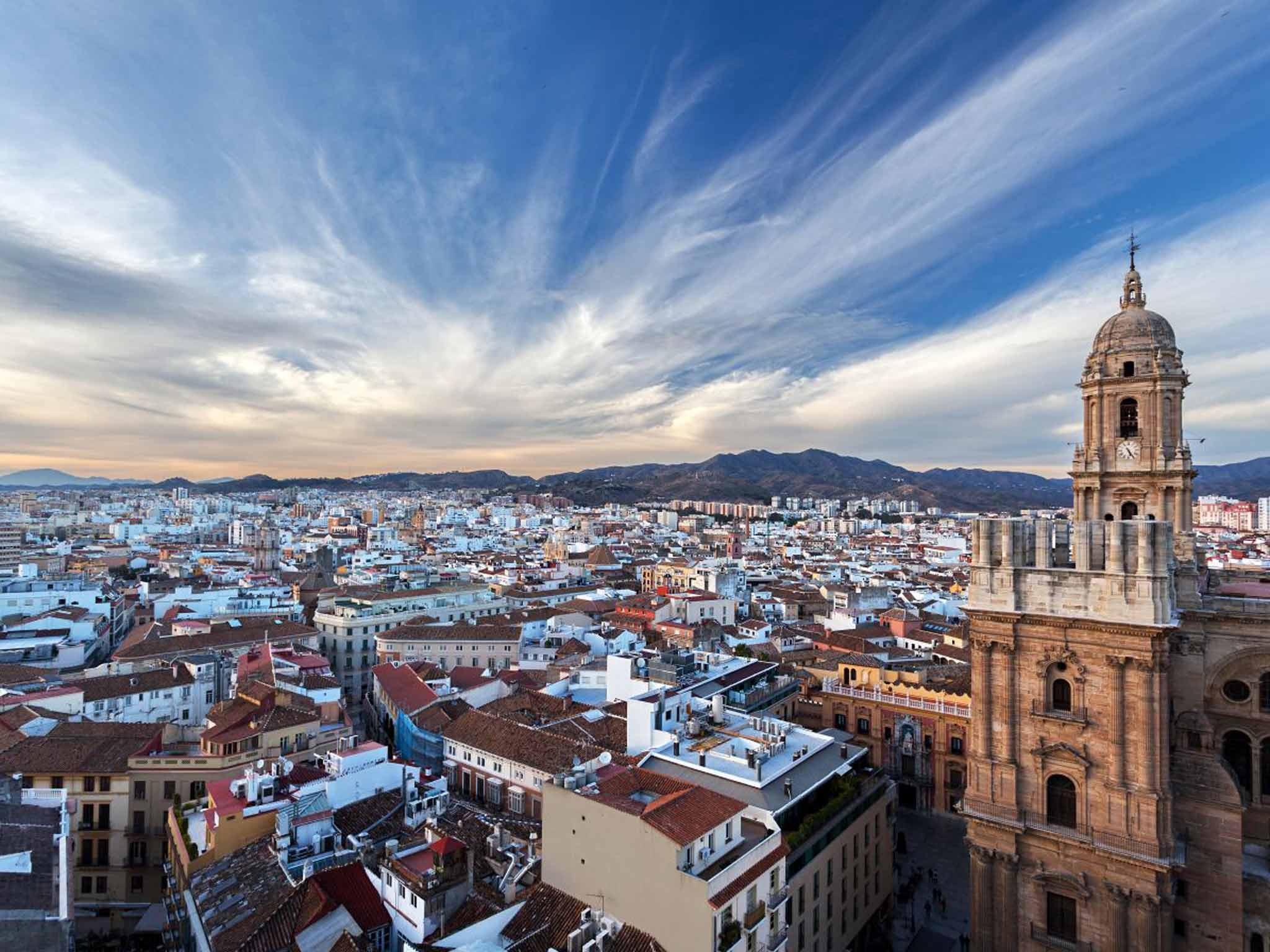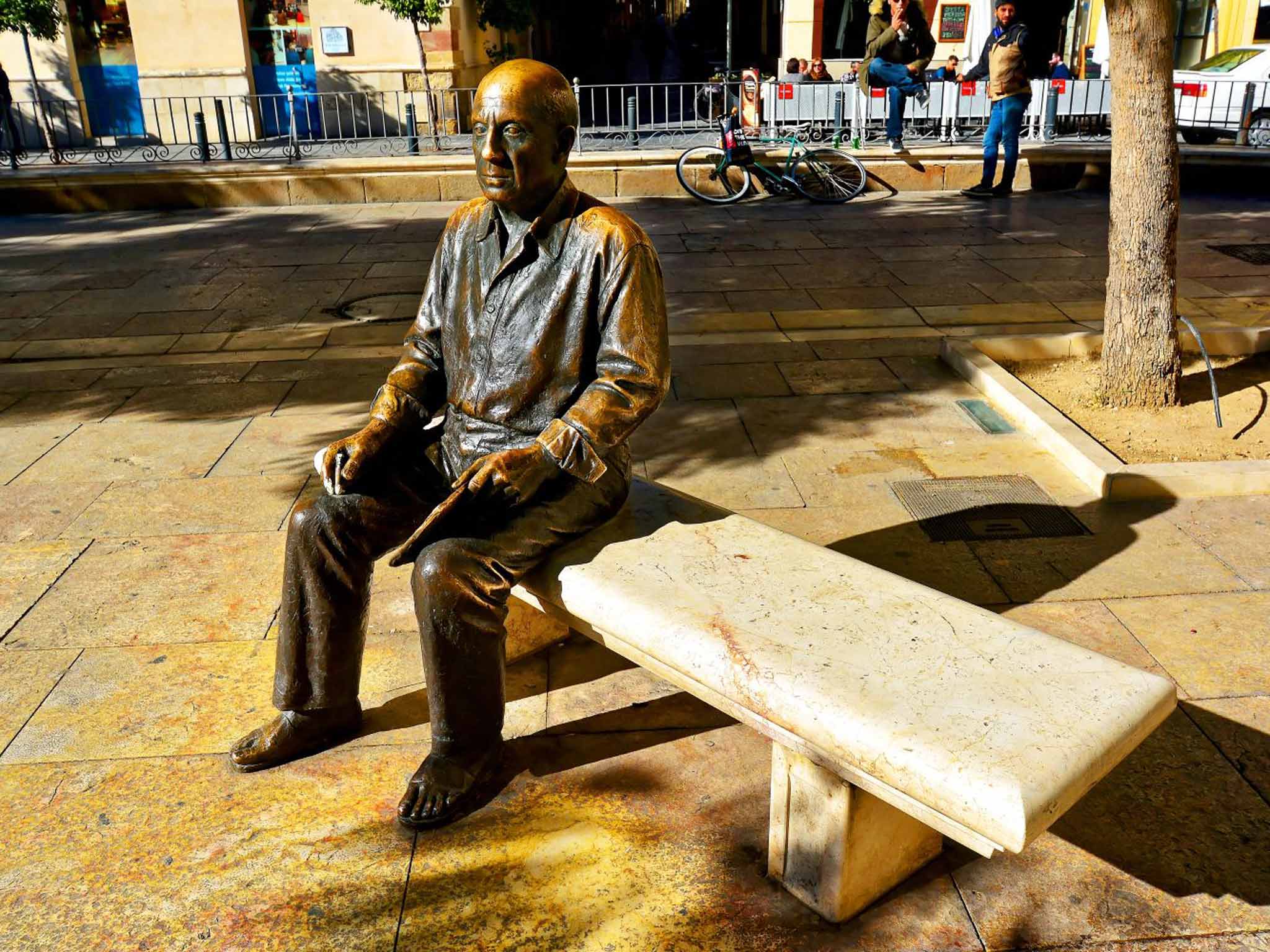The Independent's journalism is supported by our readers. When you purchase through links on our site, we may earn commission.
Malaga travel tips: Where to go and what to see in 48 hours
Andalucia's city on the Med is easy to reach, with art, great food and beaches to enjoy, says Simon Calder

Your support helps us to tell the story
From reproductive rights to climate change to Big Tech, The Independent is on the ground when the story is developing. Whether it's investigating the financials of Elon Musk's pro-Trump PAC or producing our latest documentary, 'The A Word', which shines a light on the American women fighting for reproductive rights, we know how important it is to parse out the facts from the messaging.
At such a critical moment in US history, we need reporters on the ground. Your donation allows us to keep sending journalists to speak to both sides of the story.
The Independent is trusted by Americans across the entire political spectrum. And unlike many other quality news outlets, we choose not to lock Americans out of our reporting and analysis with paywalls. We believe quality journalism should be available to everyone, paid for by those who can afford it.
Your support makes all the difference.Travel essentials
Why go now?
The marvellous Picasso Museum (1) launches its latest exhibition on Monday 14 March, featuring some of the less well known works by the city's favourite son.
With two millennia of history echoing through the narrow streets of the old town, great bars and restaurants, and a good city beach, Malaga is where Andalucia meets the Mediterranean in the most engaging and energetic way.
Touch down
More than 20 UK airports have non-stop flights to Malaga, with flights on British Airways (0844 493 0787; ba.com), easyJet (0843 104 5000; easyjet.com), Flybe (0871 700 2000; flybe.com), Jet2 (0871 226 1737; jet2.com), Monarch (0333 003 0700; monarch.co.uk), Ryanair (0871 246 0000; ryanair.com) and Vueling (0905 078 1000; vueling.com).
Malaga's airport is seven kilometres west of the city. Trains run between the airport and Malaga Centro-Alameda (2) station every 20 minutes, and cost €1.40 for the 12-minute journey. Buses (€2) take a bit longer, but leave every 20 to 30 minutes and go deeper into the city, to the Plaza de La Marina (3) on the Alameda Principal. This is also the site of the tourist office (00 34 951 926 020; malagaturismo.com; 9am to 6pm, daily).
Get your bearings
Malaga's old town – the Centro Historico – is a compact, leaf-shaped area enclosed by the Alameda Principal, the Guadalmedina river, Calle Carreteria, Calle Alamos and Calle Alcazabilla, which fringes the Roman amphitheatre (4) and the 11th-century Moorish citadel, the Alcazaba (5). Uphill from the Alcazaba, the Gibralfaro castle (6) dominates the city. To the south, stands the mighty bullring (7) and the dramatically refreshed waterside area – muelleuno (“quay one”), which is punctuated by La Farola (8), an impressive lighthouse.
A metro is under construction, which is causing diversions and traffic jams.
Check in
The triangle of land south of the Alameda Principal is excellent territory for good-value hotels. I paid €80 for a double room with breakfast at the Hotel Bahia Malaga (9) at Calle Somera 9 (00 34 952 224 305; hotelbahiamalaga.com). It sells itself as a boutique hotel but is, in fact, simply a good three-star with an impressive roof terrace, friendly staff and simple rooms.
Close by, at Calle Casas de Campos 17, the Room Mate Lola (10) (00 34 952 57 93 00; lola.room-matehotels.com) is a genuine four-star boutique property, typically charging €115 for a double with breakfast at the pre-pay rate; about 10 per cent more if you pay on arrival.
Top choice for everything except easy access to the city is the Parador de Malaga Gibralfaro (11), on the hill east of the centre and adjacent to the Gibralfaro castle (6). The views from almost everywhere – including the rooftop swimming pool – are excellent (00 34 952 221 902; parador.es). Rates in March are around €158 for a double, with breakfast.

Day one
Window shopping
Like other Andalucian cities, Malaga wakes up slowly. From around 8.30am daily, except Sunday, the Mercado de Atarazanas (12) is the liveliest place in town, full of noise, colour and produce straight from the farm – and the sea. Ataranzas means “dockyards,” and centuries ago ships were built and repaired here. From the market, you could walk up to the Guadalmedina (normally a dried-up watercourse) and alongside it until you reach Calle Carreteria. At No 14, La Romería Málaga (13) sells off-the-peg and made-to-measure Flamenco gear.
Take a hike
Start at the Plaza de La Marina (3), which was created when the Moorish walls, that protected the city from the sea, were demolished in the 19th century. Walk north-east along Cortina del Muelle to the Roman amphitheatre (4) and its Interpretation Centre (9am- 7pm Wednesday to Saturday, 10am to 6pm Tuesday, 10am to 4pm Sunday; free).
The Roman remains merge with the Alcazaba (5). This fortress (10am to 6pm, daily except Monday) is well worth the €2.60 admission fee for exploring the shady compilation of chambers, ponds and courtyards. Climb the hill along the pathway hill just beneath the Alcazaba wall, taking in the stirring views.
The very best panoramas are from the battlements of the Gibralfaro castle (6), which also features a small museum in return for another €2.60 entrance fee (10am to 6pm, daily except Monday).
Close by, the Parador (11) is an excellent place to drink in the surroundings along with a coffee.
From the nearby mirador (14) you can zig-zag your way downhill, following a rough pathway until you reach a paved street and can make for the richly decorated bullring (7). Continue towards the water and sand of La Malagueta – Malaga's city beach.
Lunch on the run
The beach has a string of chiringuitos – outdoor cafés where you can watch your fish being grilled while you sip a beer, or order an extravagant helping of paella. The Chiringuito Sicsù (15) is the most popular. Along the nearby muelleuno, there are multiple choices for a post-prandial coffee.
Cultural afternoon
The Centre Pompidou Málaga (16) is a startling new addition to the waterfront, a southern outpost of the Parisian Modern-art establishment (00 34 951 92 62 00; centrepompidou-malaga.eu; 9.30am to 8pm, daily except Tuesday; €7, plus €2 for temporary exhibitions). Its presence is announced by a cubic rainbow of translucent tiles, but the action takes place in subterranean galleries – with art from the Paris collection curated into a challenging and disturbing “journey through 20th- and 21st-century art”.
An apéritif
The rooftop bar at La Terraza de Alcazabar (17) on the corner of Calle Pozo del Rey and Calle Alcazabilla provides an excellent view of the Centro Historico and the Gibralfaro castle. Alternatively, Pepe y Pepa (18) at Acldereria 9 dispenses a good glass of wine at less than €2, a pinta of beer at under €3, and a media (half-plate) of Iberico ham for €7.50.
Dine with the locals
Los Gatos (19) on the Plaza de Uncibay (00 34 952 22 23 40; bit.ly/GatosMalaga) is officially a tapas bar and cerveceria. Yet you can dine here happily on overflowing dishes of freshly cooked seafood in the city's most convivial surroundings.

Day two
Sunday morning: Go to church
The bulky Cathedral (20) is built on the remains of a mosque – and mirrors the fortunes of the Spanish nation. The construction of Nuestra Señora de la Encarnación spanned 150 years in the 16th and 17th centuries, and involves Gothic, Renaissance and Baroque elements.
The intricate main façade looks unbalanced; the single tower was supposed to be matched in the 19th century, but funds were diverted to fight the revolutionary movements in Latin America.
The vast interior is filled with a profusion of embellishment. Mass takes place at 9am, 10am and 11.30am on Sundays; strictly tourist visits are restricted to weekdays (10am to 6pm) and Saturdays (10am to 5pm), admission €5.
Out to brunch
Directly opposite the cathedral, La Taberna del Obispo (21) is touristy but serves generous quantities of good food at reasonable prices. The fritura varieda (€15) is all manner of fried fish, while the brochette pollo (chicken skewers, €12) is excellent.
A few minutes' walk away at Calle Marqués de Larios 7, Lepanto (22) is a historic patisserie/ice-cream parlour where an helado costs €2.50 (00 34 952 22 62 21).
A walk in the park
Paseo del Parque is a curious blend of blossoming gardens and a busy thoroughfare. Along its northern flank, Avenida Cervantes, are somefine buildings: the University rectory (23), the elegant Casona del Parque (24); and the 1919 City Hall (25).
Take a ride
Málagabici is the city's bike-share scheme, but it is intended for residents with a subscription. Bike2Malaga (26) at Calle Vendeja 6 (00 34 951 25 22 64; bike2malaga.com) rents out bikes for €5 for a half day, allowing further exploration.
Icing on the cake
Pablo Picasso was born in the Plaza de la Merced (27) in 1881. A plaque marks the apartment where he was brought up, and a bronze statue sits on a bench in the square. Discussions on a home for his work in Malaga began in 1953, but it took half a century before the Picasso Museum (1) opened in the Palacio de Buenavista at Calle San Agustín 8 (00 34 952 12 76 00; museopicassomalaga.org). This magnificent mansion houses more than 200 works chronicling Picasso's art from 1892 to 1972.
Join our commenting forum
Join thought-provoking conversations, follow other Independent readers and see their replies
Comments